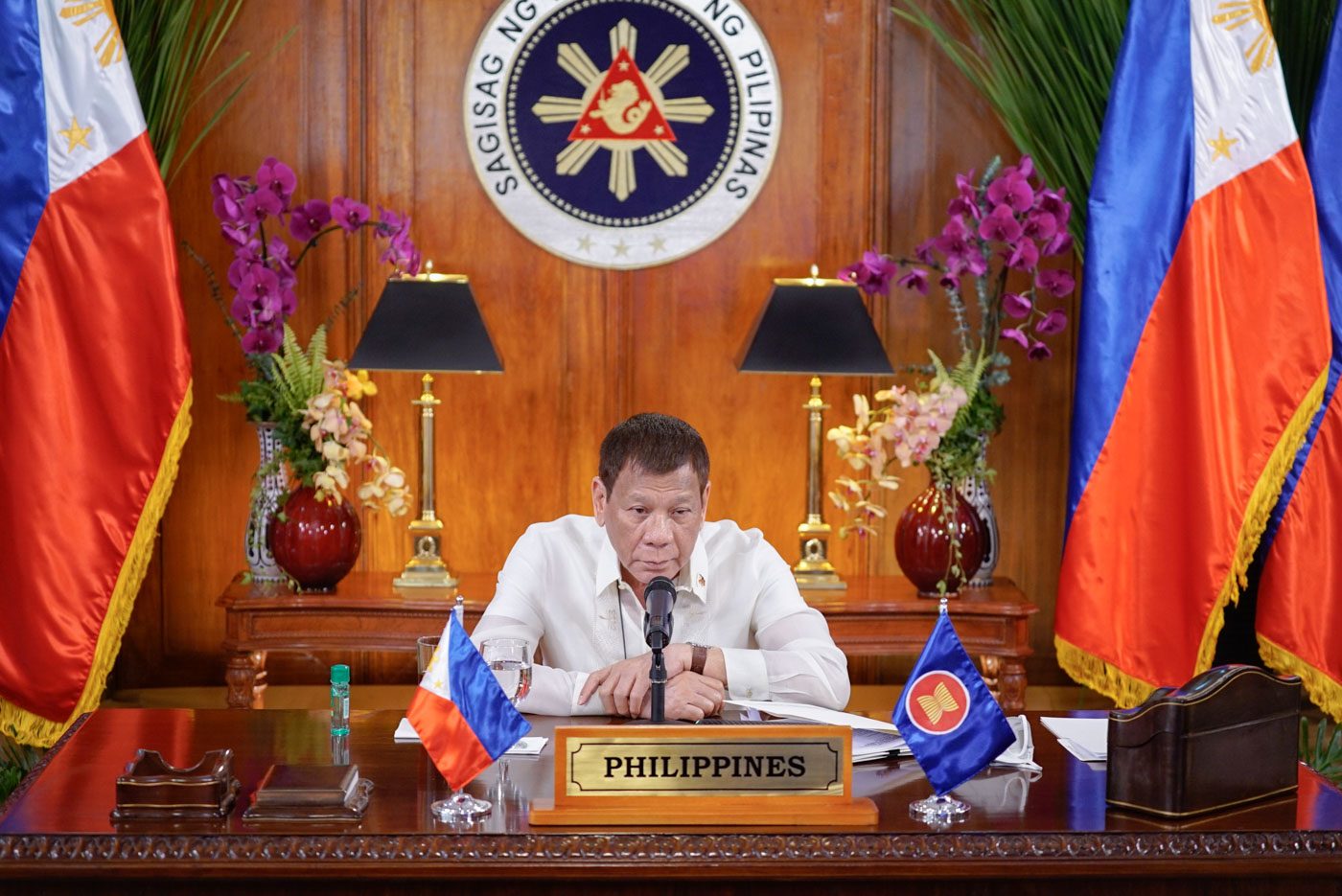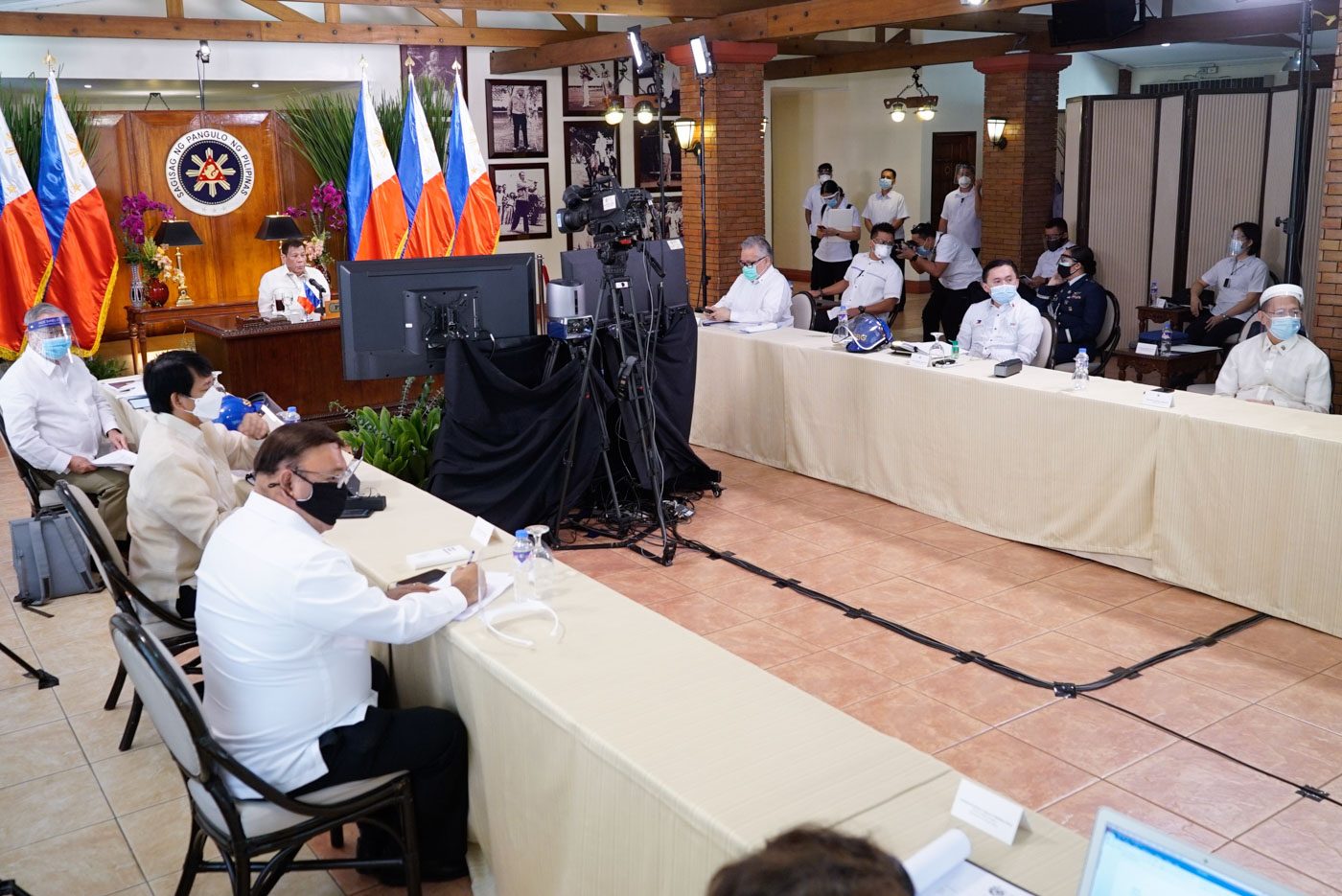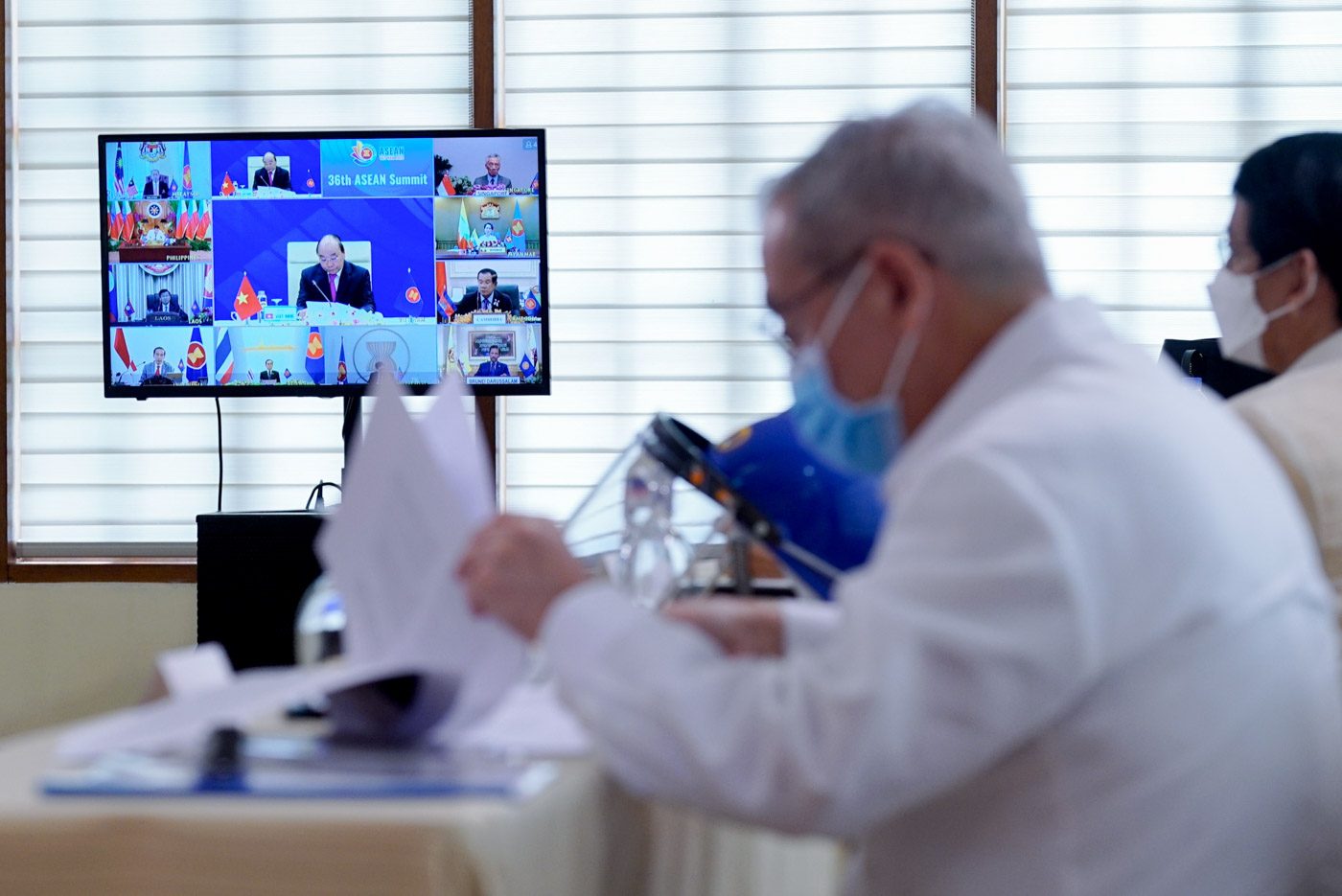SUMMARY
This is AI generated summarization, which may have errors. For context, always refer to the full article.

MANILA, Philippines – Philippine President Rodrigo Duterte joined 9 other Southeast Asian leaders in the virtual 36th Association of Southeast Asian Nations (ASEAN) Summit on Friday, June 26, where the coronavirus pandemic dominated the discussion.
The 36th ASEAN Summit plenary session took place on Friday from different locations. It was broadcast primarily from Hanoi, Vietnam, where Vietnamese Prime Minister Nguyen Xuan Phuc gave his opening remarks. Vietnam is this year’s summit host.
The summit broadcast was split into 10 screens to show the 9 other leaders watching the proceedings in their own offices.


Duterte was in the Malago Clubhouse in Malacañang, seated behind a hardwood desk and flanked by 3 Philippine flags on both sides.
The 36th ASEAN Summit comes two months after a special ASEAN Summit called especially to tackle COVID-19. Duterte had joined this meeting too, the first to be held virtually by the regional bloc.
ASEAN unity vs virus
ASEAN countries have committed to helping each other boost their economies after the blow dealt by the pandemic to jobs, businesses, and tourism.
Back in April, Duterte had joined fellow leaders in the first virtual ASEAN summit convened especially to tackle COVID-19.
Duterte, in his speech at the summit, said ASEAN should start implementing initiatives to build resilient regional supply chains.
“We have to maximize trade facilitation initiatives to promote the growth and participation of MSMEs (micro, small, and medium enterprises) in regional and global value chains,” he said.
The Philippine leader joined calls by other leaders for ASEAN economic ministers to craft a region-wide recovery plan that is “innovative and ambitious.”
ASEAN countries are also exploring allowing travel between them for business purposes and subject to health protocols. Elsewhere in the world, countries are mulling travel bubbles – or allowing travel between their country and other countries that have curbed the spread of the virus in their shores.
ASEAN has also put up a COVID-19 Response Fund, something Duterte welcomed.
Duterte also mentioned long-term efforts, like promoting research and strengthening the region’s capability to develop technologies for fighting diseases like COVID-19.
He called for the ASEAN Center for Biodiversity to combat wildlife trafficking in the hopes of preventing human-animal interaction that often gives rise to such diseases.
South China Sea, US-China rivalry
But other topics frequently mentioned by Duterte in past ASEAN meetings still formed part of his speech.
He returned to the United States-China rivalry, for instance, saying this time that the coronavirus health crisis has “added a new layer to this complex relationship.”
“The Great Powers will continue to draw us into their respective camps. We should continue to nimbly engage them in ways that most [benefit us],” said Duterte.
The President, accused by critics of being too soft on China, said ASEAN must “insist on an open and rules-based international order that gives all countries – large or small – not just one voice, but an equal standing.”
The South China Sea was also top of mind. At least 5 ASEAN leaders mentioned it, said Presidential Spokesman Harry Roque in a virtual press briefing after Duterte’s speech.
Duterte himself mentioned that “alarming incidents” occured in the South China Sea during the pandemic. He did not specify but in recent days, there have been reports of a China plan to establish an air defense identification zone over the South China Sea, including the West Philippine Sea.
Duterte’s own defense secretary, Delfin Lorenzana, opposes the plan since it violates the rules-based order set by the 1982 United Nations Convention on the Law of the Sea (UNCLOS).
Duterte mentioned UNCLOS in his speech where he called on “parties” to “refrain from escalating tensions” and abide by international law.
He then promised that the Philippines, as country coordinator of the ASEAN’s dialogues with China, would speed up the finalization of an “effective and substantive” Code of Conduct in the South China Sea.
This code is supposed to lay down rules and protocols for both China and ASEAN countries that have claims in the South China Sea. – Rappler.com
Add a comment
How does this make you feel?
There are no comments yet. Add your comment to start the conversation.